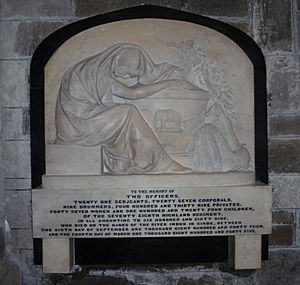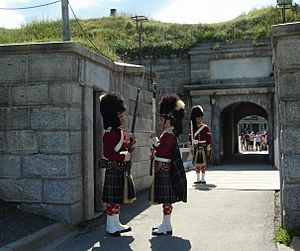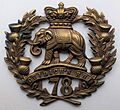78th (Highlanders) Regiment of Foot facts for kids
Quick facts for kids 78th Highland Regiment |
|
|---|---|
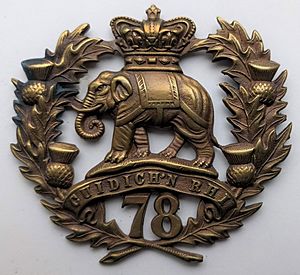
Bonnet badge
|
|
| Active | 1793–1881 |
| Country | |
| Branch | |
| Type | Infantry Regiment |
| Size | One battalion (two battalions, 1794–96 and 1804–16) |
| Garrison/HQ | Fort George, near Inverness (1873–81) |
| Nickname(s) | The King's Men |
| Mascot(s) | Elephant |
| Engagements | French Revolutionary Wars Second Maratha War Napoleonic Wars Anglo-Persian War Indian Rebellion Second Afghan War |
| Insignia | |
| Tartan | 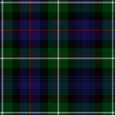 Regimental tartan (dark version of what later became Clan Mackenzie pattern) |
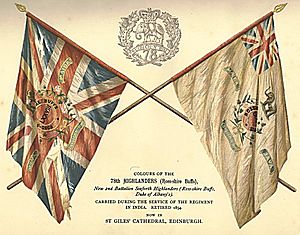
The 78th (Highlanders) Regiment of Foot was a special Highland infantry regiment formed in 1793. These soldiers were known for their bravery and unique Scottish traditions. Later, in 1881, it joined with another regiment to become the Seaforth Highlanders.
Contents
History of the 78th Highlanders
How the Regiment Started
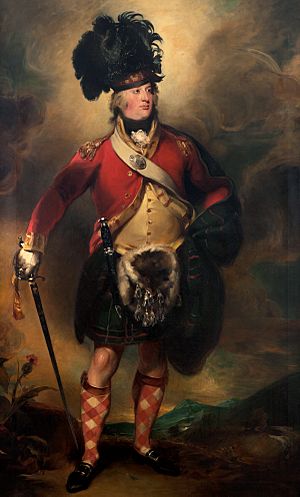
The 78th (Highlanders) Regiment of Foot was created by Francis Humberston MacKenzie. He was the leader of the Clan Mackenzie, a famous Scottish family. The regiment was also called "The Ross-shire Buffs." It officially started on March 8, 1793.
The soldiers first gathered at Fort George in Scotland in July 1793. Soon after, they moved to the Channel Islands and then to Holland in September 1794. They fought in the French Revolutionary Wars. One of their first battles was defending Nijmegen in November 1794. During a fierce attack with bayonets (knives attached to rifles), the regiment had many soldiers wounded.
In 1794, the 78th Regiment also created a second group of soldiers, called a battalion. This second battalion sailed to South Africa in July 1795. There, they helped the British navy capture the Dutch Cape Colony in September 1796.
Adventures in India
In March 1796, the first battalion of the 78th Regiment also sailed to South Africa. In June, the two battalions joined together. Later that year, they left South Africa and headed to India.
In India, the regiment fought in the Battle of Assaye in September 1803. This was during the Second Anglo-Maratha War. The 78th Regiment played a key role by taking back enemy gun lines. Because of their bravery, they received a special third flag from the East India Company. This flag had an elephant symbol, which the regiment also wore as a badge.
Later, while stationed in Ceylon (now Sri Lanka), the 78th Regiment got a baby elephant as a regimental mascot. This elephant even traveled back to Scotland with the soldiers and was later given to Edinburgh Zoo.
Fighting in the Napoleonic Wars
The regiment stayed in India until 1811. Then, they joined the invasion of Java and helped capture Fort Cornelis. After leaving Java in September 1816, the ship carrying the battalion, the Frances Charlotte, was wrecked near Burma. Luckily, most of the soldiers were rescued by other ships.
A second battalion was formed again in May 1804. This group went to Gibraltar and then to Italy. They fought bravely in the Battle of Maida in July 1806. They also took part in the Alexandria Expedition in 1807. Some soldiers were captured during this time.
In 1809, a group from this battalion was part of the difficult Walcheren Campaign in Holland. Many soldiers got sick with malaria. Even though they were not at full strength, this battalion went back to Holland in 1814. They defeated a larger French force in a small fight near Antwerp. They were in Belgium during the Waterloo campaign but did not fight. Both battalions returned to Scotland by 1817 and joined together again.
The Victorian Era and Beyond
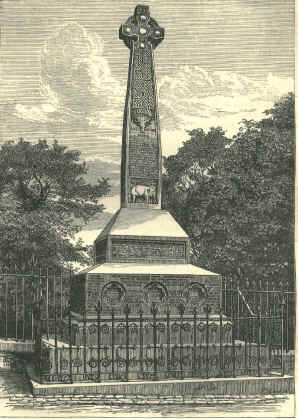
The regiment spent many years in Ceylon from 1826 to 1838. After returning home, they helped control industrial riots in England in 1840. In April 1842, the 78th traveled back to India. They were needed to replace soldiers lost during the First Anglo-Afghan War.
While in Sindh, India, the regiment faced a terrible challenge: cholera. Many soldiers, women, and children died between 1844 and 1845. To make up for these losses, new soldiers were recruited from all over the United Kingdom. This meant that the number of Scottish soldiers in the regiment became less than half.
After serving in India and Aden, the 78th moved to Persia in January 1857. They fought in the Battle of Khushab in February 1857 during the short Anglo-Persian War.
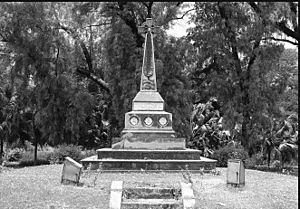
The regiment returned to India in May 1857 to help stop the Indian Rebellion. They helped retake Cawnpore in July 1857. Then, they bravely defended the city of Lucknow until more help arrived in November 1857. The 78th Regiment earned eight Victoria Crosses (the highest award for bravery) during this campaign. They were called the 'saviour of British India' and were praised by famous poets. The regiment returned home in September 1859.
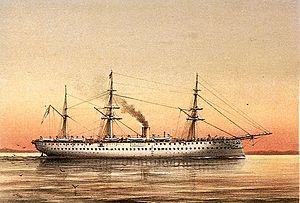
In 1865, the regiment went to Gibraltar. In May 1869, they sailed on a troopship called HMS Crocodile to Halifax in Nova Scotia, Canada. Each summer, the soldiers camped at Bedford to practice shooting. When they left in 1871, a special farewell party was held for them. The regiment, along with 17 young local women who had married soldiers, sailed to Ireland in November 1871.
In Ireland, the 78th Regiment helped keep order during riots. After several postings in Scotland and England, they arrived in India again in March 1879. They moved to Afghanistan to guard Kandahar during the winter of 1880–81, at the end of the Second Anglo-Afghan War.
In the 1870s, changes were made to the British Army. The 78th Regiment was linked with the 71st Regiment and shared a training base at Fort George. Then, on July 1, 1881, the 78th Regiment officially joined with the 72nd Regiment, Duke of Albany's Own Highlanders. Together, they formed the Seaforth Highlanders. The 78th became the second battalion of this new regiment.
Legacy of the 78th Highlanders
The history of the 78th Highland Regiment is still remembered today. In Nova Scotia, Canada, places like Citadel Hill have special programs. People dressed as soldiers from the 78th Highland Regiment show visitors what life was like back then. There is also a famous pipe band called the 78th Highlanders (Halifax Citadel) Pipe Band, which was formed in 1983.
Battle Honours
The 78th Regiment earned special "battle honours" for their bravery in important battles. These include:
- Assaye (during the Second Anglo-Maratha War)
- Maida and Java (during the Napoleonic Wars)
- Persia and Koosh-Ab (during the Anglo–Persian War)
- Lucknow (during the Indian Rebellion of 1857)
- Afghanistan, 1879–80 (during the Second Anglo-Afghan War)
Victoria Cross Heroes
All the Victoria Crosses (the highest award for bravery in the British military) received by soldiers of the 78th Regiment were for their actions during the Indian Rebellion of 1857. These brave soldiers were:
- Lieutenant Andrew Cathcart Bogle (July 29, 1857)
- Lieutenant Joseph Petrus Hendrik Crowe (August 12, 1857)
- Private James Hollowell (September 26, 1857)
- Surgeon Joseph Jee (September 25, 1857)
- Lieutenant Herbert Taylor Macpherson (September 25, 1857)
- Assistant Surgeon Valentine Munbee McMaster (September 25, 1857)
- Colour Sergeant Stewart McPherson (September 26, 1857)
- Private Henry Ward (September 25, 1857)
Images for kids


